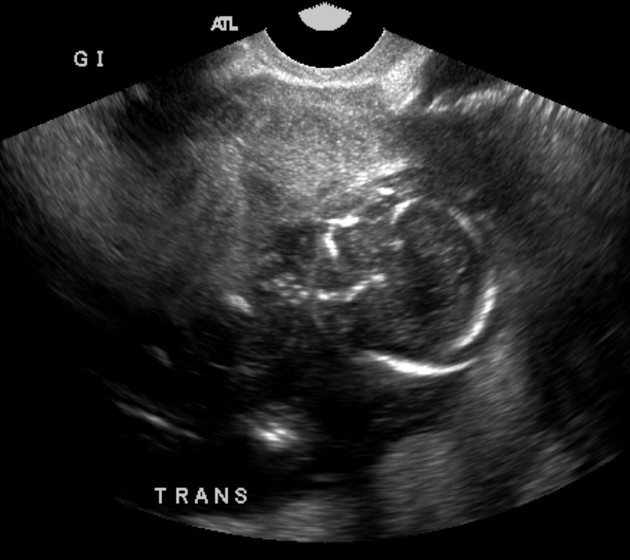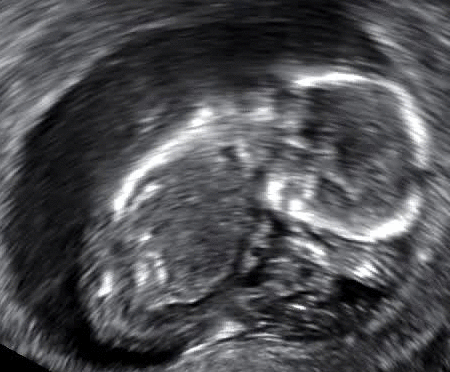embryonic demise
Failed early pregnancy refers to the death of the embryo and therefore, miscarriage. The most common cause of embryonic death is a chromosomal abnormality.
Radiographic features
Ultrasound
Findings diagnostic of pregnancy failure
- crown-rump length (CRL) of ≥7 mm and no heartbeat on a transvaginal scan
- mean sac diameter (MSD) of ≥25 mm and no embryo on a transvaginal scan
- absence of embryo with heartbeat ≥2 weeks after a scan that showed a gestational sac without a yolk sac
- absence of embryo with heartbeat ≥11 days after a scan that showed a gestational sac with a yolk sac
- sac with no embryo and an MSD <12 mm on initial scan that fails to double in size on a scan ≥14 days later
- sac with no embryo and an MSD ≥12 mm on initial scan with no embryo heart activity on a scan ≥7 days later
- embryo (irrespective of crown-rump length) without cardiac activity on initial scan and on repeat scan ≥7 days later
- cessation of a previously documented cardiac activity of embryo (irrespective of crown-rump length)
Findings suspicious but not diagnostic of pregnancy failure
- crown-rump length (CRL) of <7 mm and no heartbeat
- mean sac diameter (MSD) of 16-24 mm and no embryo
- absence of embryo with heartbeat 7-13 days after a scan that showed a gestational sac without a yolk sac
- absence of embryo with heartbeat 7-10 days after a scan that showed a gestational sac with a yolk sac
- absence of embryo ≥6 weeks after last menstrual period
- absence of embryo when amnion seen adjacent to yolk sac (empty amnion sign)
- embryo present with amnion visible around it but no heartbeat (expanded amnion sign)
- small gestational sac in relation to the size of the embryo (<5 mm difference between mean sac diameter and crown-rump length)
- enlarged yolk sac (>7 mm)
Practical points
When there are findings suspicious for pregnancy failure, follow-up ultrasonography at 7-14 days to assess the pregnancy for viability is generally appropriate.
See also
Siehe auch:
- fetal pole
- Dottersack
- Abortus completus
- Fehlgeburt
- Abortivei
- verhaltener Abort
- CRL
- Abortus incompletus
- embryo
- fetal heart beat
- drohende Fehlgeburt
- unvermeidliche Fehlgeburt
- MSD
und weiter:

 Assoziationen und Differentialdiagnosen zu embryonal demise:
Assoziationen und Differentialdiagnosen zu embryonal demise:




